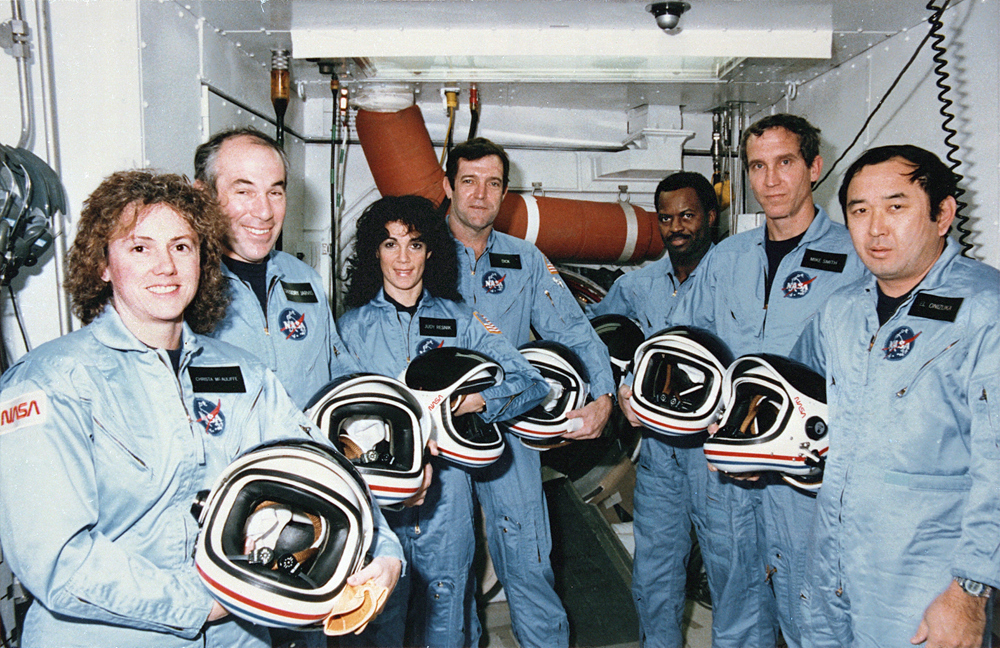
NASA will honor the memories of its fallen astronauts during a series of special ceremonies Thursday (Jan. 28), the 30th anniversary of the Challenger space shuttle tragedy.
The agency will pay tribute to Challenger's seven-member crew, as well as the three astronauts lost in 1967's Apollo 1 fire and the seven space flyers who died when the shuttle Columbia broke apart in 2003. Ceremonies will occur during NASA's annual Day of Remembrance, on Thursday.
NASA Administrator Charles Bolden, Deputy Administrator Dava Newman and other senior officials will participate in a wreath-laying ceremony at Virginia's Arlington National Cemetery Thursday at 9 a.m. EST (1400 GMT). Another wreath-laying ceremony will occur at 10 a.m. EST (1500 GMT) at the Kennedy Space Center (KSC) Visitor Complex in Florida; you can watch this latter ceremony live here at Space.com, courtesy of NASA TV. [Fallen Heroes of Space Exploration: A Memorial (Gallery)]
Other NASA centers, including Marshall Space Flight Center in Alabama, Johnson Space Center in Houston and Glenn Research Center in Ohio, will host their own events to mark the somber occasion.
The three NASA tragedies occurred just a few days apart on the calendar, over the span of 36 years. The Apollo 1 fire broke out in the command module of Gus Grissom, Ed White and Roger Chaffee on Jan. 27, 1967, while the three astronauts were participating in a launch pad test at Cape Kennedy (now known as Cape Canaveral) Air Force Station in Florida. All three men were killed.
Challenger exploded just 73 seconds after launching from KSC on Jan. 28, 1986, killing mission commander Francis "Dick" Scobee; pilot Mike Smith; mission specialists Judith Resnik, Ron McNair and Ellison Onizuka; and payload specialists Greg Jarvis and Christa McAuliffe (who had been chosen to fly via NASA's "Teacher in Space" program).
An investigation later determined that Challenger was doomed by a failure in an "O-ring" seal on the shuttle's right-hand solid rocket booster. Cold weather played a role in the failure, by hardening the usually flexible O-ring.
Get the Space.com Newsletter
Breaking space news, the latest updates on rocket launches, skywatching events and more!
Columbia was lost toward the very end of its mission, breaking apart upon re-entry to Earth's atmosphere on Feb. 1, 2003. A piece of insulating foam had broken off Columbia's huge external fuel tank during the shuttle's launch two weeks earlier, and investigators later determined that the chunk damaged the orbiter's left wing, allowing hot atmospheric gases to enter the wing's interior.
All seven astronauts on board — mission commander Rick Husband; pilot William McCool; payload commander Michael Anderson; mission specialists David Brown, Kalpana Chawla and Laurel Clark; and payload specialist Ilan Ramon, from the Israel Space Agency — were killed.
Follow Mike Wall on Twitter @michaeldwall and Google+. Follow us @Spacedotcom, Facebook or Google+. Originally published on Space.com.
Join our Space Forums to keep talking space on the latest missions, night sky and more! And if you have a news tip, correction or comment, let us know at: community@space.com.

Michael Wall is a Senior Space Writer with Space.com and joined the team in 2010. He primarily covers exoplanets, spaceflight and military space, but has been known to dabble in the space art beat. His book about the search for alien life, "Out There," was published on Nov. 13, 2018. Before becoming a science writer, Michael worked as a herpetologist and wildlife biologist. He has a Ph.D. in evolutionary biology from the University of Sydney, Australia, a bachelor's degree from the University of Arizona, and a graduate certificate in science writing from the University of California, Santa Cruz. To find out what his latest project is, you can follow Michael on Twitter.